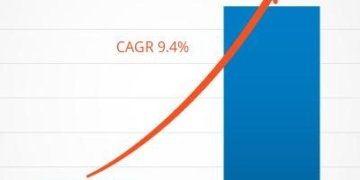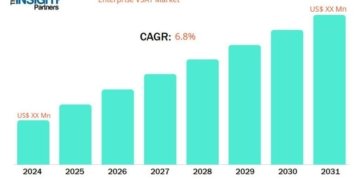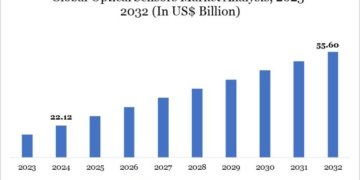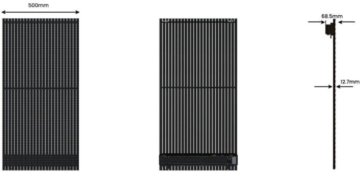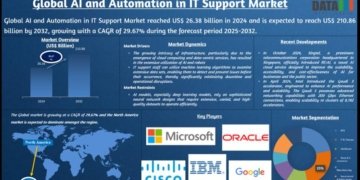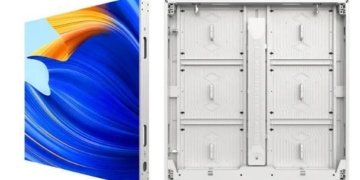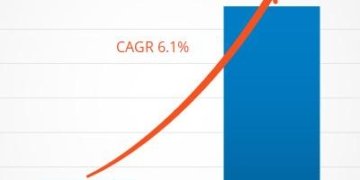The global IoT Connected Machines Market is at the forefront of the digital revolution, transforming industries by enabling seamless machine-to-machine communication, data sharing, and automated decision-making. Estimated to grow from a valuation of US$ 274 billion in 2021 to a projected US$ 1.10 trillion by 2031, the market is expected to expand at an impressive CAGR of 15.4% over the forecast period. This significant growth is propelled by the increasing adoption of IoT-connected devices across diverse industries, improving operational efficiencies, reducing costs, and advancing the potential of predictive maintenance. Segmented into components like hardware (IoT kits and gateways), software, and services (consulting, integration, and support), the IoT connected machines market is positioned to revolutionize manufacturing, logistics, energy, and many other sectors.
Discover Valuable Insights: Download the Report Sample – https://www.transparencymarketresearch.com/sample/sample.php?flag=S&rep_id=29153
Market Dynamics
Increasing Demand for Data-Driven Decision Making
The industrial sector is experiencing a shift toward data-driven decision-making, and IoT-connected machines are central to this transformation. IoT devices embedded in machines collect real-time data, providing valuable insights into performance, efficiency, and potential issues. With such rich datasets at their fingertips, businesses can implement predictive analytics, optimize processes, and anticipate maintenance needs, reducing downtime and costs. The demand for data-driven operations is especially high in industries such as manufacturing, logistics, energy, and healthcare, where precision and efficiency are paramount. As companies continue to recognize the value of this data, IoT-connected machines are becoming indispensable tools for staying competitive in today’s fast-paced business environment.
Expanding Scope of Industrial Automation
Industrial automation is a significant driver in the IoT connected machines market, where interconnected devices are automating previously manual processes. IoT technologies play a critical role in enabling intelligent automation by integrating machinery with advanced sensors, gateways, and software platforms that allow for real-time monitoring and adjustments. For instance, in the manufacturing sector, IoT-connected machines can adjust production flows based on demand, ensuring optimized resource use and waste reduction. Automated systems also enhance quality control, as machines equipped with IoT sensors can detect inconsistencies and make immediate corrections. This growing adoption of industrial automation is not only boosting efficiency but also providing industries with the agility to respond quickly to market changes.
Growing Investment in Smart Cities and Infrastructure
Governments and corporations worldwide are making substantial investments in smart city projects, and IoT-connected machines are integral to these initiatives. Smart cities rely on a network of interconnected devices that manage traffic, energy, water, and other critical infrastructure. IoT-connected machines in these environments help monitor infrastructure health, control traffic lights, and manage utilities more efficiently. For example, connected water pumps in smart cities can optimize water distribution, identify leaks, and save resources. As more regions commit to smart city projects, the demand for IoT-connected machines across sectors like energy, water management, and transportation will continue to grow, driving market expansion.
Key Market Segments
Component: Hardware, Software, and Services
The IoT connected machines market is segmented by component into hardware, software, and services, each playing a unique role in driving industry growth.
• Hardware: Hardware components, including IoT kits and gateways, serve as the backbone of IoT-connected machines. These devices collect and transmit data from sensors embedded in machines, enabling real-time monitoring and analytics. As IoT adoption grows, so does the demand for robust and efficient hardware that can withstand various industrial environments. Hardware advancements, such as more energy-efficient and durable devices, will likely contribute to the market’s growth in the coming years.
• Software: Software plays a crucial role in transforming raw data into actionable insights. IoT software platforms facilitate data collection, visualization, and analytics, allowing businesses to make informed decisions. Moreover, software solutions are increasingly integrating artificial intelligence (AI) and machine learning (ML) capabilities, further enhancing predictive maintenance, quality control, and operational efficiency. As companies prioritize data-driven strategies, the demand for advanced IoT software solutions will continue to rise.
• Services: The services segment, which includes consulting, integration, and support, is essential for helping businesses implement and maintain IoT-connected solutions. Consulting services guide organizations on selecting the right IoT technologies, while integration services ensure seamless connectivity between machines, devices, and platforms. Support services provide ongoing maintenance and troubleshooting, which is crucial for preventing downtime and ensuring the longevity of IoT systems. As more businesses adopt IoT technologies, the need for specialized services is anticipated to grow, supporting the overall expansion of the market.
Dive deeper into the XYZ market with insights from the research report at: https://www.transparencymarketresearch.com/iot-connected-machines-market.html
Market Trends
Recent Developments in IoT Technologies
The IoT connected machines market is witnessing a wave of technological advancements, particularly in areas such as 5G connectivity, edge computing, and AI integration. The advent of 5G technology is revolutionizing IoT by enabling faster data transfer speeds and lower latency, allowing for real-time analytics and control. This is especially critical in industries that require immediate response times, such as healthcare and manufacturing. Additionally, edge computing is becoming increasingly popular, enabling data processing closer to the source of data collection rather than relying on a centralized cloud server. This reduces latency and enhances data security, making it ideal for applications in industries with high-security requirements.
Market Challenges
While the IoT connected machines market is growing rapidly, several challenges persist. Data security remains a top concern, as interconnected devices create new vulnerabilities for cyberattacks. Protecting sensitive data from unauthorized access and breaches is critical, particularly in sectors like healthcare, where patient information must remain confidential. Additionally, the lack of interoperability between IoT devices from different manufacturers can hinder the seamless integration of connected machines. This lack of standardization can lead to increased costs and complexity when implementing IoT solutions. Overcoming these challenges will require advancements in cybersecurity measures and greater standardization across the IoT ecosystem.
Market Opportunities
Despite these challenges, the IoT connected machines market presents significant opportunities for growth. As IoT adoption increases in emerging markets, particularly in Asia-Pacific and Latin America, companies have the chance to tap into new customer bases. Emerging markets are investing in industrial automation and smart city projects, creating substantial demand for IoT-connected devices. Furthermore, the rise of AI-powered IoT solutions is unlocking new capabilities in predictive analytics, anomaly detection, and machine learning, allowing companies to derive even greater value from their IoT investments.
Regional Analysis
The IoT connected machines market is witnessing significant growth across various regions, with North America and Europe leading the charge. North America’s strong technological infrastructure, combined with early IoT adoption by industries such as manufacturing and healthcare, has positioned it as a major market for IoT-connected machines. Europe is also making strides, with significant investments in smart city initiatives and sustainability efforts, fueling the demand for connected devices. Meanwhile, Asia-Pacific is emerging as a key growth region, driven by rapid industrialization, urbanization, and the expansion of smart city projects in countries like China, Japan, and South Korea.
Competitive Landscape
Key players in the IoT connected machines market are focusing on product development, partnerships, and expanding their geographic footprint to stay competitive. Companies such as Advantech Co., Ltd., AT&T, ABB, Beckhoff Automation, Cisco Systems, Inc., Dell Inc., General Electric, Honeywell International, Inc., IBM, Robert Bosch GmbH, Rockwell Automation, Inc., Schneider Electric, and Siemens are at the forefront of innovation. These organizations are investing in new technologies to enhance connectivity, improve data security, and optimize machine performance. By developing advanced IoT platforms and integrating cutting-edge technologies like AI and edge computing, these companies are well-positioned to lead the industry forward.
Click Here to Purchase this Comprehensive Insights Report: https://www.transparencymarketresearch.com/checkout.php?rep_id=29153<ype=S
More Trending Reports-
A2P SMS Market: https://www.transparencymarketresearch.com/global-a2p-sms-market.html
Telecom Enterprise Services Market: https://www.transparencymarketresearch.com/telecom-enterprise-services-market.html
About Us Transparency Market Research
Transparency Market Research, a global market research company registered at Wilmington, Delaware, United States, provides custom research and consulting services. The firm scrutinizes factors shaping the dynamics of demand in various markets. The insights and perspectives on the markets evaluate opportunities in various segments. The opportunities in the segments based on source, application, demographics, sales channel, and end-use are analysed, which will determine growth in the markets over the next decade.
Our exclusive blend of quantitative forecasting and trends analysis provides forward-looking insights for thousands of decision-makers, made possible by experienced teams of Analysts, Researchers, and Consultants. The proprietary data sources and various tools & techniques we use always reflect the latest trends and information. With a broad research and analysis capability, Transparency Market Research employs rigorous primary and secondary research techniques in all of its business reports.
Contact Us:
Transparency Market Research Inc.
CORPORATE HEADQUARTER DOWNTOWN,
1000 N. West Street,
Suite 1200, Wilmington, Delaware 19801 USA
Tel: +1-518-618-1030
USA – Canada Toll Free: 866-552-3453
Website: https://www.transparencymarketresearch.com
Email: sales@transparencymarketresearch.com
This release was published on openPR.
